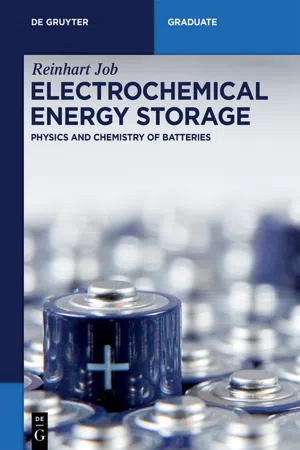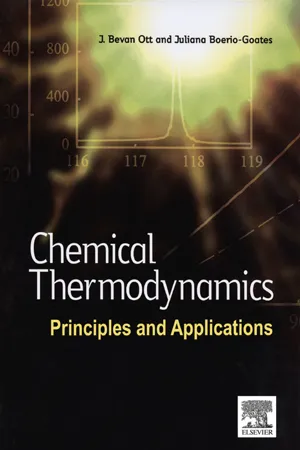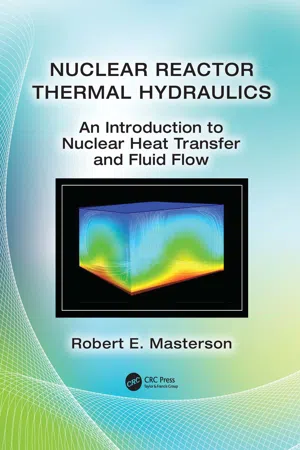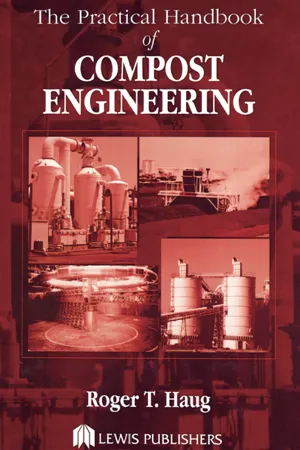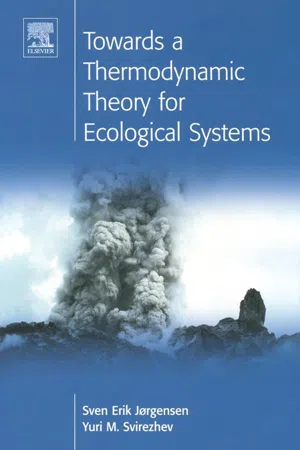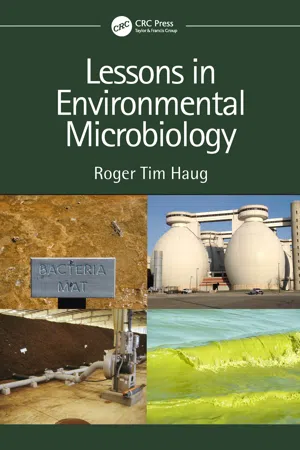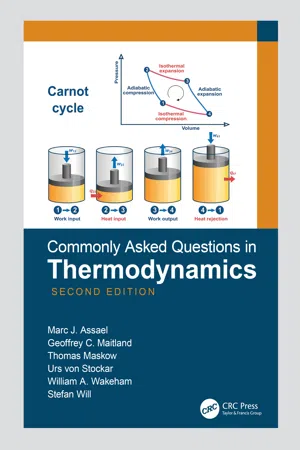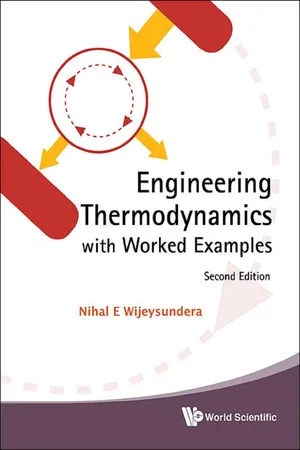Chemistry
The Laws of Thermodynamics
The Laws of Thermodynamics are fundamental principles that govern the behavior of energy and matter in the universe. The first law states that energy cannot be created or destroyed, only transformed from one form to another. The second law describes the concept of entropy, which indicates the direction of spontaneous processes and the tendency of systems to move towards disorder.
Written by Perlego with AI-assistance
Related key terms
Related key terms
1 of 4
Related key terms
1 of 3
11 Key excerpts on "The Laws of Thermodynamics"
- No longer available |Learn more
- Steven Boone, Drew H. Wolfe(Authors)
- 2011(Publication Date)
- Collins Reference(Publisher)
CHAPTER 7Thermochemistry: The First Law of Thermodynamics
T hermodynamics is the study of energy changes and transformations that occur in physical and chemical processes. Thermochemistry is the application of The Laws of Thermodynamics to chemical processes. In this chapter, we will consider the most fundamental principles of thermochemistry.7.1 INTRODUCTION TO THERMOCHEMISTRYIn this chapter, the concept of energy transfer that matter undergoes is introduced. What Is the Importance of Thermodynamics?Thermodynamic principles may be used to decide whether a chemical reaction can occur spontaneously under a given set of conditions. If the reaction does occur, thermochemical principles can be used to predict the magnitude of the energy transfer. Moreover, thermodynamic principles are used to predict the extent to which a chemical reaction occurs. One important property of a reaction that cannot be predicted by chemical thermodynamics is the rate, or speed, at which a reaction occurs.The Laws of ThermodynamicsThermochemistry is based on three fundamental laws of nature. In this chapter, the first law of thermodynamics is considered. One way to state the first law of thermodynamics is that energy cannot be created or destroyed in physical and chemical processes. This statement is also called the law of conservation of energy . To develop an understanding of the second and third laws of thermodynamics as they apply to chemical reactions, you need to learn more about the fundamentals of chemistry. Therefore, these two laws are discussed in Chapter 18.7.2 THE LANGUAGE OF THERMODYNAMICSThermodynamic terms and definitions provide the framework for understanding the importance of how energy transfer affects chemical reactions. Thermodynamic SystemsIn thermodynamics, the system , sys, is the part of the universe under the investigation. Everything else in the universe is in the surroundings , surr. The combination of the system and the surroundings is the universe - eBook - ePub
Electrochemical Energy Storage
Physics and Chemistry of Batteries
- Reinhart Job(Author)
- 2020(Publication Date)
- De Gruyter(Publisher)
2 ThermodynamicsThermodynamics is a fundamental part of classical physics. It is a closed theory describing macroscopic physical properties – such as the internal energy, entropy, pressure and volume – of matter (and radiation). Thermodynamics shows that the physical properties of matter are subject to general constraints that are common to all substances and materials; anyhow, the appearances of particular properties of specific substances and materials are different. The fundamental constraints are expressed in the thermodynamic laws. These laws completely rule our macroscopic world; and they are described further briefly in this chapter.Thermodynamics is the base of a large variety of topics in science and engineering. It is fundamental for mechanical and chemical engineering. In particular, it describes physical and chemical equilibrium states, and therefore, it is very important for chemistry and chemical reactions. With the help of experimentally measured thermal data, energetic changes of matter and systems can be calculated, and hence, a change of equilibrium states or phase transitions can be predicted and simulated. The same holds for the chemical reactions and processes. Altogether, thermodynamics has a very strong practical relevance in chemistry and engineering.Before we discuss the fundamental four laws of thermodynamics, in the following subsection, we introduce a variety of physical terms and definitions, which are necessary for the later explanations.2.1 Terms and definitions
Dealing with thermodynamics requires a set of definitions and a good understanding of the physical terms and wordings, which has to be clarified before further explanations and discussions are presented.2.1.1 Systems
A system is a macroscopically spatially well-defined part of the universe. It is the special part of the universe that is to be studied or analyzed, and it is separated from the surroundings (Figure 2.1 - eBook - ePub
Chemical Thermodynamics: Principles and Applications
Principles and Applications
- J. Bevan Ott, Juliana Boerio-Goates(Authors)
- 2000(Publication Date)
- Academic Press(Publisher)
Chapter 2The First and Second Laws of Thermodynamics
In Chapter 1 we described the fundamental thermodynamic properties’ internal energy U and entropy S . They are the subjects of the First and Second Laws of Thermodynamics. These laws not only provide the mathematical relationships we need to calculate changes in U, S, H, A , and G , but also allow us to predict spontaneity and the point of equilibrium in a chemical process. The mathematical relationships provided by the laws are numerous, and we want to move ahead now to develop these equations.12.1 The First Law of Thermodynamics
We earlier referred to an 1865 statement of the First Law given by Clausius,Die Energie der Welt ist Konstant .That is, the energy of the universe is constant. The First Law is often referred to as the Law of Conservation of Energy ; energy cannot be created or destroyed.a Mathematically, the First Law can be written as(2.1)Different processes involving energy changes can occur in the universe, but their sum must be zero. That is,(2.2)where the ΔUi’s are the changes in internal energy for the various processes.The First Law predicts that energy added to or removed from a system must be accounted for by a change in the internal energy ΔU . Energy is added to or removed from a system as work, w or heat, q , in which case(2.3)For an infinitesimal process, equation (2.3) becomes(2.4)where δq and δw are infinitesimal amounts of heat or work. The symbols δq and δw are used to represent the infinitesimal amount (rather than dq and dw ) to emphasize that q and w are not state functions, and hence, the infinitesimal quantities are not exact differentials.Heat and work represent ways that energy can be transferred from one system to another, and they are dependent upon the path followed in making the transfer. It is interesting to note that although q and w change with the path, their sum, in going from an initial state (1) to a final state (2) by two different paths, produces the same ΔU , since U is a state function and ΔU is independent of the path. Thus, as a path is modified to change q, w changes accordingly so that the sum stays constant.b We now want to calculate w and q for different processes so that we can calculate ΔU - eBook - ePub
Physics of Cryogenics
An Ultralow Temperature Phenomenon
- Bahman Zohuri(Author)
- 2017(Publication Date)
- Elsevier(Publisher)
The first law of thermodynamics is generally thought to be the least demanding to grasp, as it is an extension of the law of conservation of energy, meaning that energy can be neither created nor destroyed. However much energy there was at the start of the universe, there will be that amount at the end. However, thermodynamics is a subtle subject, and the first law is much more interesting than this remark might suggest. Moreover, like the zeroth law, which provided an impetus for the introduction of the property “temperature” and its clarification, the first law motivates the introduction and helps to clarify the meaning of the elusive concept of “energy.”Energy balance, based on the first law of thermodynamics, is developed to better understand any process, to facilitate design and control, to point at the needs for process improvement, and to enable eventual optimization. The degree of perfection in the energy utilization of the process, or its particular parts, allows comparison with the degree of perfection, and the related process parameters, to those in other similar processes. Comparison with the currently achievable values in the most efficient systems is especially important. Priorities for the required optimization attempts for a system, or its components, can be established. Such priorities can be carried out based either on the excessive energy consumption, or on the particularly low degree of perfection.However, the energy approach has some deficiencies. Generally, energy exchange is not sensitive to the assumed direction of the process, e.g., energy analysis allows heat to be transferred spontaneously in the direction of the increasing temperature. Energy also does not distinguish its quality, e.g., 1 Watt of heat equals 1 Watt of work or electricity.The first law of thermodynamics states that the total energy of a system remains constant, even if it is converted from one form to another. For example, kinetic energy—the energy that an object possesses when it moves—is converted to heat energy when a driver presses the brakes on the car to slow it down. The first law of thermodynamics relates the various forms of kinetic and potential energy in a system to the work, which a system can perform, and to the transfer of heat. This law is sometimes taken as the definition of internal energy , and also introduces an additional state variable, enthalpy . The first law of thermodynamics allows for many possible states of a system to exist. However, experience indicates that only certain states occur. This eventually leads to the second law of thermodynamics and the definition of another state variable called entropy - eBook - ePub
Nuclear Reactor Thermal Hydraulics
An Introduction to Nuclear Heat Transfer and Fluid Flow
- Robert E. Masterson(Author)
- 2019(Publication Date)
- CRC Press(Publisher)
6The Laws of Thermodynamics
6.1 An Introduction to The Laws of Thermodynamics
Nuclear heat transfer and fluid flow are based on a set of empirical laws that have become known as the three laws of thermodynamics . These laws are actually a set of “empirical principles” that were first proposed in the 1800s—about 150 years before the first nuclear power plants were built. However, they have so much importance to the field of nuclear science and engineering that no discussion of reactor thermal-hydraulics would be complete without them. In this chapter, we would like to briefly discuss these laws and their importance to the nuclear industry as a whole (See Figure 6.1 and Table 6.1 ).6.2 The First Law of Thermodynamics
The first law of thermodynamics was proposed in the early 1800s when it became apparent that heat energy could be converted into mechanical energy and work. The first law is simply an observation of the fact that thermal energy and hence heat energy are conserved quantities, and that the thermal energy produced in a reactor core can be used to perform useful work and produce electric power. In other words, the first law of thermodynamics states that heat is a conserved quantity, and the second law, which we will discuss next, defines where this thermal energy must go. Specifically, the first law (see Figures 6.2 and 6.3 ) says that.FIGURE 6.1 - eBook - ePub
- RogerTim Haug(Author)
- 2018(Publication Date)
- Routledge(Publisher)
CHAPTER 3 Thermodynamic Fundamentals INTRODUCTIONThermodynamics is the branch of science that deals with energy and its transformations. Thermodynamics is normally associated with heat, but the subject deals not only with heat but all forms of energy. The principles of thermodynamics are well established and have been applied to physical, chemical, and biological systems. Lehninger1 has stated that the proper study of biology, for example, should start from thermodynamic principles as the central theme that can best systematize biological facts and theories. This same statement can be made about the study of composting systems. Application of thermodynamic principles is a fundamental way of analyzing composting systems just as it has been a fundamental method for analysis of other physical, chemical, and biological processes. Because The Laws of Thermodynamics appear to be inviolable, application of these laws will reveal much about the limitations and expectations of composting systems.The subject of thermodynamics should be distinguished clearly from the related subject of kinetics. Thermodynamics deals with the energy changes that accompany a process. Kinetics deals with rates or velocities of reactions and cannot be inferred from thermodynamics. For example, organic molecules in a piece of paper contain a rather substantial amount of energy. If a match is struck to the paper the energy is released at a rapid kinetic rate. If the paper is decomposed by microbial action, as in a compost pile, the energy is released at a much slower kinetic rate. The same amount of energy is released in either case but the kinetics are quite different. The subject of this Chapter is energy changes as determined by thermodynamics. Kinetic principles of composting are discussed in Chapter 10 .For most organisms life is a constant struggle or search for energy supplies needed to power the cellular machinery. Certain higher organisms, such as man, have freed themselves from the constant search for energy. Nevertheless, the human body is constantly “burning” various stored substances for energy. If these stored reserves are not replaced at periodic intervals, death is inevitable. Microorganisms, however, spend nearly their entire life cycles in search of energy sources. Despite this difference, many of the fuels used by microbes are also used by man. - S.E. Jorgensen, Y.M. Svirezhev(Authors)
- 2004(Publication Date)
- Pergamon(Publisher)
When I had been a student, I have read with pleasure F. Wald’s small book under the title “The Queen of the World and her Shadow”. Energy and entropy were kept in mind. Now, when I understand these concepts deeper, I think that their positions should be interchanged. In the giant factory of natural processes the entropy law is a director who controls and manages all the business, while the energy conservation law is only an accountant who is keeping a balance between debit and credit.Robert Emden , 1938.2.1 Introduction
Following a classic biosphere and ecological tradition (Vernadsky, 1926 ; Lindeman, 1942 ), we can say that the structure, functioning and evolution of the biosphere, as a whole, and ecosystems in particular, are mainly determined by the flows of matter, heat and radiation. A physical study of their interaction is possible in the framework of thermodynamics. The subject of classic thermodynamics is the consideration of conformities in energy transformations when they are transferred between different physical bodies (which we shall call “systems”) in the form of heat and work. Thermodynamics methods are applicable to so-called macroscopic systems consisting of a great number of particles. In physics, the particles are molecules.Thermodynamics is now one of the most complete and elegant chapters of theoretical physics. However, the domain of the applications of its general concept and methods is much larger than purely physical and chemical systems. Generally speaking, a thermodynamics approach allows us to describe general (macroscopic, systemic ) properties of the systems consisting of the large number of interacting elementary (microscopic ) objects (particles ). Therefore, when we talk about a thermodynamic approach in such a semi-empirical and phenomenological natural science as ecology, we hope implicitly that these methods help us to overcome an ecological “perdition of dimension”. In other words, we could reduce a huge number of the individual descriptions of specimens, populations, their interactions, concentrations of different chemical substances, etc. to a few macroscopic- eBook - ePub
- Donald W. Rogers(Author)
- 2011(Publication Date)
- Wiley(Publisher)
CHAPTER 3 THE THERMODYNAMICS OF SIMPLE SYSTEMSThermodynamics, literally heat motion, is one of the pillars of physical chemistry and one of the great achievements of modern science. Classical thermodynamics is the study of those quantities that are conserved, like energy, enthalpy, and free energy. Statistical thermodynamics is the link between this great theoretical edifice and that of quantum mechanics.3.1 CONSERVATION LAWS AND EXACT DIFFERENTIALSMuch of nineteenth-century thermodynamics was devoted to the discovery, definition, and characterization of physical quantities that are conserved. The simple statement energy is conserved is one of the ways of stating the first law of thermodynamics . Conservation can be illustrated by carrying a rock up a hill and then bringing it back down again. The potential energy of the rock in the gravitational field of the earth increases on the way up and decreases on the way down, but it is the same at the end of the process as it was at the beginning; it is conserved. By contrast, work is not conserved. Carrying the rock around the circular path up and down the hill can be easy or hard, depending on the path. Also, the work done on the way up is not the same as the work that can be obtained by allowing the rock to drive some kind of primitive motor as it rolls down the hill.Work is not the only factor that has to be taken into account. The difference between an easy path and a hard path up the hill is illustrated by the simplified model of a mass being pushed up over the same change in height (altitude) but over two different inclined planes, one rough and the other smooth. The potential energy change is the same, but the rough plane requires more work and it produces some amount of heat due to friction. Heat is not conserved over the cyclic path either. We symbolize the nonconservation of work or heat by the sum, that is, the integral, of infinitesimal heat or work increments dq or dw over the cyclic path . But we have already said that energy U is conserved over a cyclic path so - eBook - ePub
- Roger Tim Haug(Author)
- 2019(Publication Date)
- CRC Press(Publisher)
4Life and Energy: The Principles of Chemical and Photo ThermodynamicsThe proper study of biology should start from thermodynamic principles. In fact, energy and its transformations may be viewed as the central theme which can best systematize biological facts and theory.Albert Lehninger (1965)Thermodynamics is one of those words best avoided in a book with any pretence to be popular. Nick Lane (2009)What Is Thermodynamics?
Thermodynamics is the branch of science that deals with energy, its transformations, and the energy changes that accompany physical, chemical, and biological processes. Thermodynamics is a basic unifying concept of all science, including physics, chemistry, and biology. For most organisms, life is a near constant struggle or search for energy supplies needed to power the cellular machinery. This is certainly true of the microbes. With the development of agriculture, man was able to free himself from the constant search for food energy. Nevertheless, the human body is constantly “burning” various stored substances for energy. If these stored reserves are not replaced at periodic intervals, death is inevitable. Microbes spend nearly their entire life cycle in the search for energy. If times are lean, some microbes can go into a dormant state and reemerge when conditions improve. Even these must eventually find an energy source, or death is certain.Although the need for an energy supply is common to all life forms, the actual sources can be markedly different. The study of different energy sources available to microbes is probably the best approach to understanding the differences between life forms. These energy sources include organic “foods,” inorganic “foods,” and the energy of light. Understanding these sources of energy will also lead to a better understanding of reactions that microbes mediate and the useful tasks to which they can be directed in properly engineered systems. - eBook - ePub
- Marc J. Assael, Geoffrey C. Maitland, Thomas Maskow, Urs von Stockar, William A. Wakeham, Stefan Will(Authors)
- 2022(Publication Date)
- CRC Press(Publisher)
PV-energy at constant pressure.1.5 What is the First Law of Thermodynamics?
1.5.1 What Is the Statement of the First Law?
The First Law says that energy balances do not contain a source term. For a closed system without the influence of potential or kinetic energy, the First Law is thus written as shown in Equations 1.43 and 1.48. (These equations are restricted to closed systems but remain valid for reactive systems.) This means that energy cannot be created inside the system nor destroyed. It is therefore also impossible to invent a perpetual motion machine, because that would need to constantly create energy from nothing. A very clear example of the application of the First Law in the form of Equation 1.43 is given in Question 1.6.2.1.5.2 How Are Changes in Thermodynamic Energy Linked to Measurable State Variables?
In many cases, the state functions internal energy and enthalpy need to be linked to the variables defining the state of the system to make them useful. The number of variables that must be specified is given by the phase rule (see Question 4.1.2) and amounts to two plus the number of compounds in a homogeneous mixture without chemical reactions. A reasonable choice of variables might be: Temperature, volume or pressure, and the number of moles of each constituent. The changes of these variables may then be linked to the change of thermodynamic energy by a total differential (Question 1.10.1) - eBook - ePub
- Nihal E Wijeysundera(Author)
- 2016(Publication Date)
- WSPC(Publisher)
Chapter 4
The First Law of Thermodynamics
In the preceding chapter we categorized all energy interactions between a system and its surroundings either as work or heat. This was a useful starting-point for the introduction of the First Law of Thermodynamics , which is essentially the law of conservation of energy formulated in a unified manner to include all energy forms. The first law relates work and heat interactions that occur at the boundary of a system, to the energy possessed or stored by a system, which we shall call the internal energy of the system. The emphasis in this chapter will be the application of the first law to a closed system undergoing steady processes. In the next chapter we shall consider open systems and transient or unsteady processes.4.1First Law for a Cyclic Process
The first law of thermodynamics can be formulated in several different ways. We will adopt the approach, known as Poincare’s formulation, because it makes use of the concepts that we are already familiar with from our work in the earlier chapters.The first law states that when a closed system undergoes a cyclic process , the net heat interaction is equal to the net work interaction . This statement of the law can be further elaborated by referring to the cyclic process consisting of ‘n ’ individual processes shown graphically in Fig. 4.1 . In our sign convention, we shall take as positive quantities the work done by the system W , and the heat flow into the system Q . It should be noted that this choice of the signs for work and heat is arbitrary. In Fig. 4.1 we have indicated with arrows the heat flow into the system and the work flow out of the system for the different processes that constitute the cycle. The first law for a cyclic process now translates to the following mathematical form:Fig. 4.1 Cyclic processExpressed in the compact form Eq. (4.1) readsIn the cyclic-integral notation Eq. (4.2)
Index pages curate the most relevant extracts from our library of academic textbooks. They’ve been created using an in-house natural language model (NLM), each adding context and meaning to key research topics.
Explore more topic indexes
Explore more topic indexes
1 of 6
Explore more topic indexes
1 of 4

